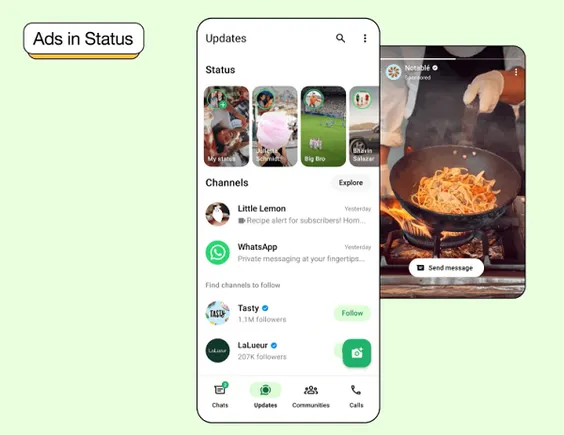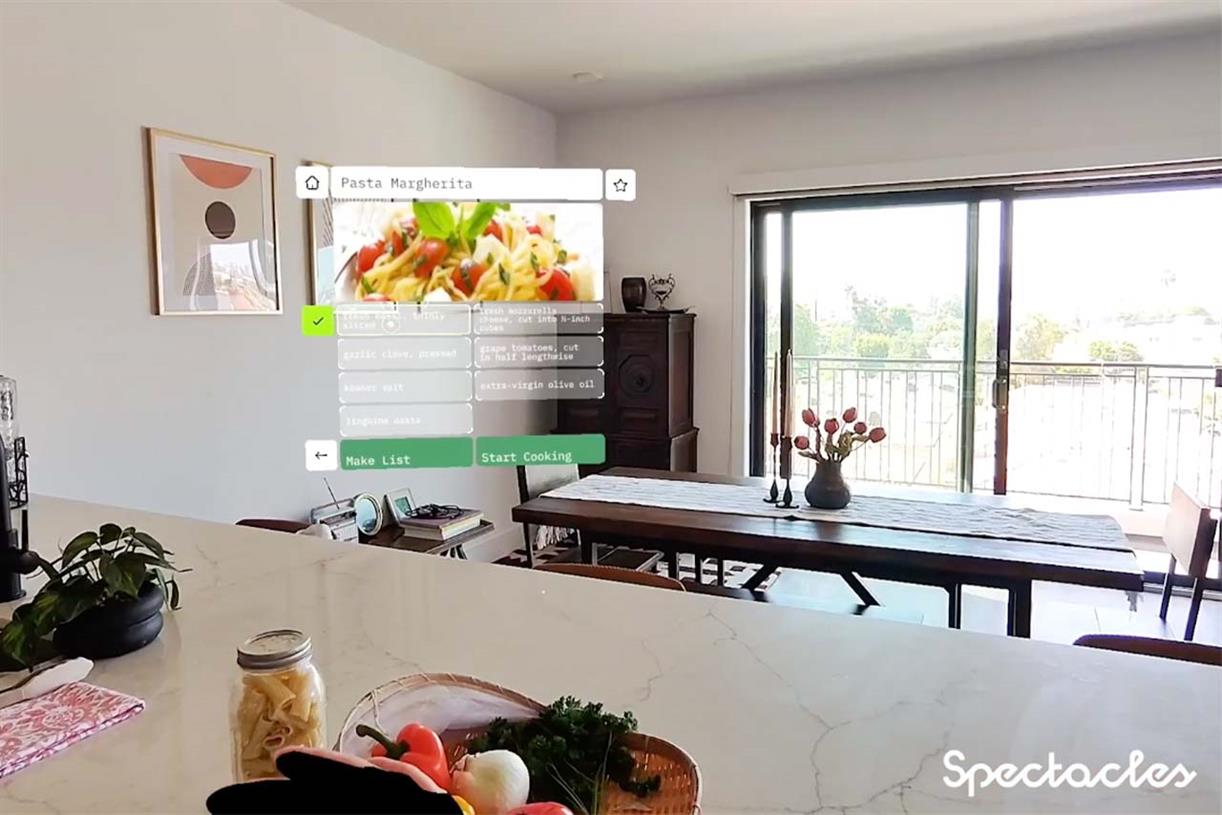14 Must-Try Creative Marketing Ideas for 2022
Incorporating creative marketing ideas into your next campaign can help it stand out from the competition. Draw inspiration from these great content examples.

Drawing a blank on ideas for your next marketing campaign? Maybe you need help getting the ball rolling. It’s alright, it happens.
We have a few ideas when it comes to adding some spark to your creative marketing so you can get that message out there and gain some reader interest along the way.
People are exposed to thousands of ads every single day, meaning you need to do everything you can to make your brand stand out above the noise.
How Do You Develop Creative Marketing Ideas?
1. Understand Your Audience
Before you can start pounding away on blog posts or getting the word out on social media, you need to understand who you’re trying to get your message out to. Your target audience is who you’re trying to sell your product or service to, after all. So it’s important to understand who that audience is first, along with their wants and needs.
The topic of “target audience” or “buyer persona” gets brought up in nearly every conversation involving marketing, and that’s because it’s just that imperative. The audience should be at the foundation of every marketing campaign, otherwise you’d be blindly spending advertising dollars on people who have no potential interest in your product.
The advantages of creating personas are numerous, to say the least. They help you better understand what your ideal customer looks like, the touchpoints those customers will use during their buyer journey and the problems they need your brand to solve. Taking these steps is critical for supporting positive ROI on your marketing efforts.
2. Give Your Campaign a Theme
A solid marketing campaign is consistent in its theme and messaging, bringing about a strong visual style that your target audience can recognize. These assets should all include the same or similar message, and the same color scheme among other design elements.
A consistent theme goes for any content you put out, no matter if it’s posted on your website or your social media, as well as the places where you host said content. You want your audience members to be able to recognize your brand even after a quick glance.
3. Brand Awareness Through Educating
A key part of creative marketing for any brand should be educating its customers. Leads will gravitate towards your brand if they recognize you as a thought leader in your industry. This means putting out informative content talking about industry trends and key concepts, both on your website and social media among many other channels.
Your content should not only inform customers about your industry but should offer information about your brand as well. Tell your story and use it to form an emotional connection with your audience. Showing that your brand is relatable will make it feel approachable, not to mention it will differentiate you from the competition.
4. Try New Channels
There are numerous places and numerous ways to get your brand out there, and the landscape of creative marketing is always changing. New platforms emerge all the time, and brands have to adjust based on where their target audience’s attention is focused.
Social media apps like TikTok are on the rise, and brands have adapted their campaigns and messaging for its short-form video format.
If you’ve found success on a given channel in the past, that’s a sign that you should continue to create content for it. Continue to encourage engagement by diversifying the content you’re posting on this channel. You want people to interact with your brand and respond with questions inquiring further about your product or service.
5. Brand Ownership
There are brands out there that spend a lot of time and money equating their brand with a lifestyle. This goes beyond encouraging interaction with your brand during your marketing campaign. After customers purchase your product or service, they may become brand ambassadors: People who are passionate about your brand and feel the need to advocate for it within and outside of their circles. And this can be some of the most powerful (and free) marketing there is.
After creating your marketing campaign and beginning to roll it out, it is no longer completely under your control. Once customers receive your messaging, they can interpret it in a positive or negative way thus changing it to varying degrees. The most desired outcome happens when customers take ownership over your message and spread it for you.
The Journal of Consumer Research refers to this concept as “psychological ownership,” stating it occurs when consumers feel so invested in a product that it becomes an extension of themselves.
Subscribe to
The Content Marketer
Get weekly insights, advice and opinions about all things digital marketing.
Thanks for subscribing! Keep an eye out for a Welcome email from us shortly. If you don’t see it come through, check your spam folder and mark the email as “not spam.”
Standout Examples of Successful and Creative Marketing Ideas
It can be good to draw inspiration from others. In some of these examples, we see brands thinking outside the box to get their audience more involved, both in the marketing and day-to-day operations of the company. In other examples, it’s all about creating unique content that engages the viewer.
These creative marketing ideas play the role of getting customers excited about your brand by informing them about your industry, or even giving them ownership over the brand. The common denominator with these ideas, however, is meaningful content.
This content should leave potential customers with the feeling that your brand, as well as your product or service, is approachable. And it can be done across a multitude of platforms.
6. Use Instagram Stories To Go Behind the Scenes
Instagram is one of the best platforms to have some fun and share posts that help humanize your brand. This is especially important for B2B companies that sometimes have impersonal or very professional advertising campaigns.
GE, a predominantly B2B company, was perhaps the first business to share a sneak peek into their behind-the-scenes project in 2016. Shortly after Instagram Stories was launched, the company posted pictures to their IG Story of team members collecting data from active volcanoes.
The context was fresh and exciting for their audience who were blown away by the visuals and intrigued by the project. GE capitalized on this to encourage viewers to follow its other social media accounts. Other business to business (B2B) companies can follow suit by giving factory tours and other behind-the-scenes information their audience may be curious about.
7. Share and Repost User Generated Content
As you build up your brand’s social media presence, you may have users tagging your account in their posts on Twitter or Instagram as they use your product. This is especially true for business to consumer (B2C) brands.
There is an opportunity for businesses to turn their audience’s posts into their own Instagram Stories. When your account is tagged on the social media platform, you will be notified and can use their content in your Story. This will show viewers how your product or service works from an actual user’s perspective.
You could also quote-retweet their post on Twitter to show your followers your product in action.
B2B organizations can also share user-generated content in the form of case studies or customer testimonials.
8. Ask Your Followers About Their Preferences
One of the most exciting features to hit social media platforms is the ability to ask direct questions and receive instant feedback from your followers through polls.
In 2018, Burger King Spain used this tool to their advantage and asked their audience on Instagram to build their own burger with a question sticker and poll.
The company even went one step further to include a giveaway. Those who participated in the poll received a promotional code to redeem their “custom” burger in-store and Burger King sold an “Instagram Whopper” for a limited time based on the overall poll results. This campaign was a massive success and shows how businesses can engage users with a simple Instagram Story poll.
Other brands can post a similar Story highlight with a poll or emoji slider to collect direct consumer feedback on a campaign or new product.
9. Promote Your Website Content
You likely go out of your way to write meaningful content for your website, but the truth is, a lot of people will never see it, your followers included, if not marketed correctly.
That’s why you should share and repurpose your website content on social media, much like how Shopify did on their Instagram Story. They displayed information from their content in a visual fashion.
Instead of writing a paragraph or showing a preview of a blog post, for instance, simply post the title or compelling statistic that will urge readers to want to know more context. This text, alongside a custom image that grabs the viewer’s attention, will have them wanting more.
Instagram makes it easy to link your website in your Story with buttons, so all it takes is one click to turn a viewer into a website visitor.
10. Start a Podcast
Everyone and their mother seems to be starting a podcast nowadays, and for good reason, because it’s an explosively popular media form.
Everyone has a podcast they enjoy, whether it’s storytelling or talking about the latest happenings in a given industry. Take LexiaTalks, for example. For more than a year, Brafton has helped Lexia Learning produce its own branded podcast, LexiaTalks.
LexiaTalks regularly interviews experts in education who share insight on a range of issues that are important to our educational infrastructure, educators and learners.
Podcasts can be a continuous source of content, and can consistently offer ideas for posts on social media, not to mention they can drive traffic to your website. You could easily turn a long-form episode into short audio clips for promotion on Instagram, or you could pull quotes from the show to foster discussion on LinkedIn, for example.
11. Video Content
From video blogs to product videos, tutorial videos and video interviews, the possibilities are practically endless when it comes to creating video marketing content for your brand. In fact, there are so many types, it’s hard to decide what may work best for your brand. That’s where inspiration by example comes in.
Adobe is a household name when it comes to creating nearly any kind of content. But it seems to come up the most with video making.
Adobe created a form of talk show featuring big-name creators to showcase the creative process, along with what inspires them and any advice they may have. Putting a spotlight on these respected voices made for strong, relevant content that appealed to Adobe’s mixed B2C and B2B audience.
This content works not as an advertisement, but as a representation of the brand’s mission to inspire creativity. It also doesn’t hurt that Adobe’s products help make that creativity happen.
This story also works as an example of using a platform we have yet to mention: YouTube. Adobe hosted this video series on their YouTube channel rather than on their website, not only making it more accessible, but also taking advantage of that direct link between YouTube videos and how those videos are produced, meaning they’re speaking directly to their audience.
Video is some of the most engaging content brands can possibly make. If one format doesn’t work well for your brand, keep trying. It’s all about finding which one best highlights your product or service!
Building a More Unique Digital Marketing Strategy for Your Business
When it comes down to it, there are a million different ways to market your brand. From blogs and social media to email newsletters and cold calls, there’s no shortage of options. The real question is, how do you market your brand creatively in a way that it will stick with customers long after they’ve viewed a piece of your content?
The answer isn’t so straightforward. Here are a few ideas to change up your marketing strategy.
12. Have Fun With Your Voice
Look at your social media channels and critically think about the way your posts come across. If your tone is consistently stoic and serious when it doesn’t need to be, it may not encourage interaction with your audience or may even deter them. The same goes when only using social media to promote your products or services. Regular ads do not encourage interaction, especially paid promotions.
Don’t be afraid to pose questions to your audience, make jokes and share memes. Encourage discussion about the latest trends in your industry. Things like this make your voice relatable, and people that follow you will feel more compelled to interact with you.
13. Put the Right Marketing on the Right Platform
Using social media is imperative to any marketing campaign, but not all social media platforms are created equal. What works well on one platform may not work nearly as well on another.
Photocentric posts go over well on Instagram because that’s what it was built for: to be visual. Creating visually appealing content in the form of photos and videos can be a boon, especially if you’re selling a product that’s used in specific situations.
Twitter and Facebook may allow you to post photos, but the focus is on the text. This makes Twitter a great place to foster short-form discussion with your audience, answer questions or simply post relevant memes. Interaction is king on Twitter, and those who dwell there appreciate candidness and quick wit.
LinkedIn is for the more professional side of things. Presenting thoughtful, well-researched content on LinkedIn can position your brand as a thought leader in your industry and can foster discussion to help push your industry forward.
Though certain types of content work better than others on each platform, your tone and messaging should remain consistent. In other words, you want to make sure your business is always “on brand” no matter where you’re posting your content.
14. Look to Your Calendar for Inspiration
Whether it’s Halloween, the Winter Holiday season or Valentine’s Day, your calendar can be a big inspiration when it comes to your next marketing campaign. Even small holidays like National Doughnut Day (yes, really) can be a good source for content.
Mark your content calendar with holidays that you could use on your channels, then it’s time to start planning. Try changing your social media account themes around Halloween to an orange and black, for instance. Or draw up your logo in jelly donut filling and wish your followers a happy National Doughnut Day.
You may even look for event opportunities in your industry and let your audience know that your company will be at said event. Maybe you’re a bike brand and there’s going to be a cycling convention in your city. Your brand could broadcast its presence at the convention and maybe even have a booth or sponsor a panel.
Still Need Help Coming Up With Ideas?
Even with all of these ideas, it can still be difficult to come up with a fully formed content marketing plan. Check out our comprehensive content creation guide for even more inspiration.

 Aliver
Aliver 









![Does Your Company Need An Employee Referral Program? [Examples + Best Practices]](https://blog.hubspot.com/hubfs/interview-applicant-referred-by-employee%20%281%29.jpg#keepProtocol)
_26.jpg)

















.jpg&h=630&w=1200&q=100&v=f776164e2b&c=1)

